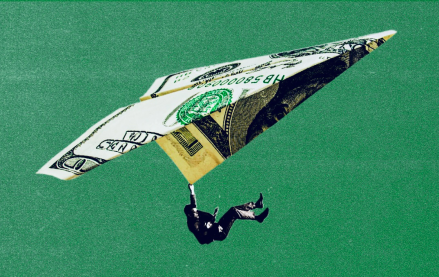Save 50% on a 3-month Digiday+ membership. Ends Dec 5.
As publishers pursue subscriptions, most start with their existing audience. But as those connections dry up, they may look for new customers through partnerships and bundles.
On Oct. 17, The New York Times and Scribd launched a dual subscription that gives customers unlimited access to both their products for $12.99 per month, compared to $24 if people subscribed separately to a basic Times digital sub ($15 a month) and Scribd ($9 a month). The pitch is that people get access to Scribd’s 1 million audiobooks and ebooks, selections from magazines including The Atlantic, Fortune and Fast Company, and access to the Times digital journalism. The companies wouldn’t share details about how they were splitting the revenue.
The partnership also offers both companies access to new readers. Scribd offers the Times, which has been trying to grow its global subscriber base, over 100 million monthly readers and 800,000 young-ish subscribers, over half of whom live outside the United States. The Times, in turn, offers over 2 million paying subscribers and a source of sought-after content that should help reduce churn. “We’re trying to be a leader with this,” said Trip Adler, Scribd’s co-founder and CEO. “We can make a lot more incremental revenue for the industry.”
Industry observers expect that content bundles will get more common, particularly as more media companies introduce paid products and as they can be a cost-efficient way to tap a new audience.
“A lot of publishers are still capitalizing on the 1.0 model and just penetrating their existing audience,” said Peter Doucette, a managing director in the publishing practice at FTI Consulting.
But they also present technical challenges. Few publishers have the technical infrastructure to share data or customer information with one another, so often, only one publisher truly winds up with the direct relationship, said Doucette.
The margins for bundles are lower than those for subscriptions that publishers can get on their own. That can make the economics challenging without scale, as media executives including Scroll founder Tony Haile have pointed out.
Brand dilution is another. While there’s little worry that content might get lost in a two- or three-publisher bundle, publishers have reason to be wary of a service like Texture, which offered consumers dozens, even hundreds of magazines.
“For publishers that don’t have well-established brands, if they think they’re going to build that in the context of a bundle, they have to recognize that their work is just starting,” said Chris Vollmer, a partner at PwC’s Strategy&.
Then there’s the question of what customers will pay extra for. Both the Times and Scribd have experimented with service and content partnerships. The Times is part of a small group of news publishers that experimented with bundling its digital subscriptions with Spotify. Scribd has tried adding specialty movie subscriptions (Mubi), learning subscriptions (Blinkist) and even meditation apps (Calm) to its offering. “We think of our bundle as a reading bundle,” Adler said. “But we’ll push the limits.”
Bundling does not solve the core branding challenge that every publisher faces, but observers expect experimentation to continue.
“It’s really hard for any service to acquire 100 percent of their consumers by themselves,” Vollmer said. “Customer acquisition for publishers of all different kinds is their #1 challenge, as everything becomes a lot more direct to consumer.”
More in Media

Marketers move to bring transparency to creator and influencer fees
What was once a direct handoff now threads through a growing constellation of agencies, platforms, networks, ad tech vendors and assorted brokers, each taking something before the creator gets paid.

Inside The Atlantic’s AI bot blocking strategy
The Atlantic’s CEO explains how it evaluates AI crawlers to block those that bring no traffic or subscribers, and to provide deal leverage.

Media Briefing: Tough market, but Q4 lifts publishers’ hopes for 2026
Publishers report stronger-than-expected Q4 ad spending, with many seeing year-over-year gains.








